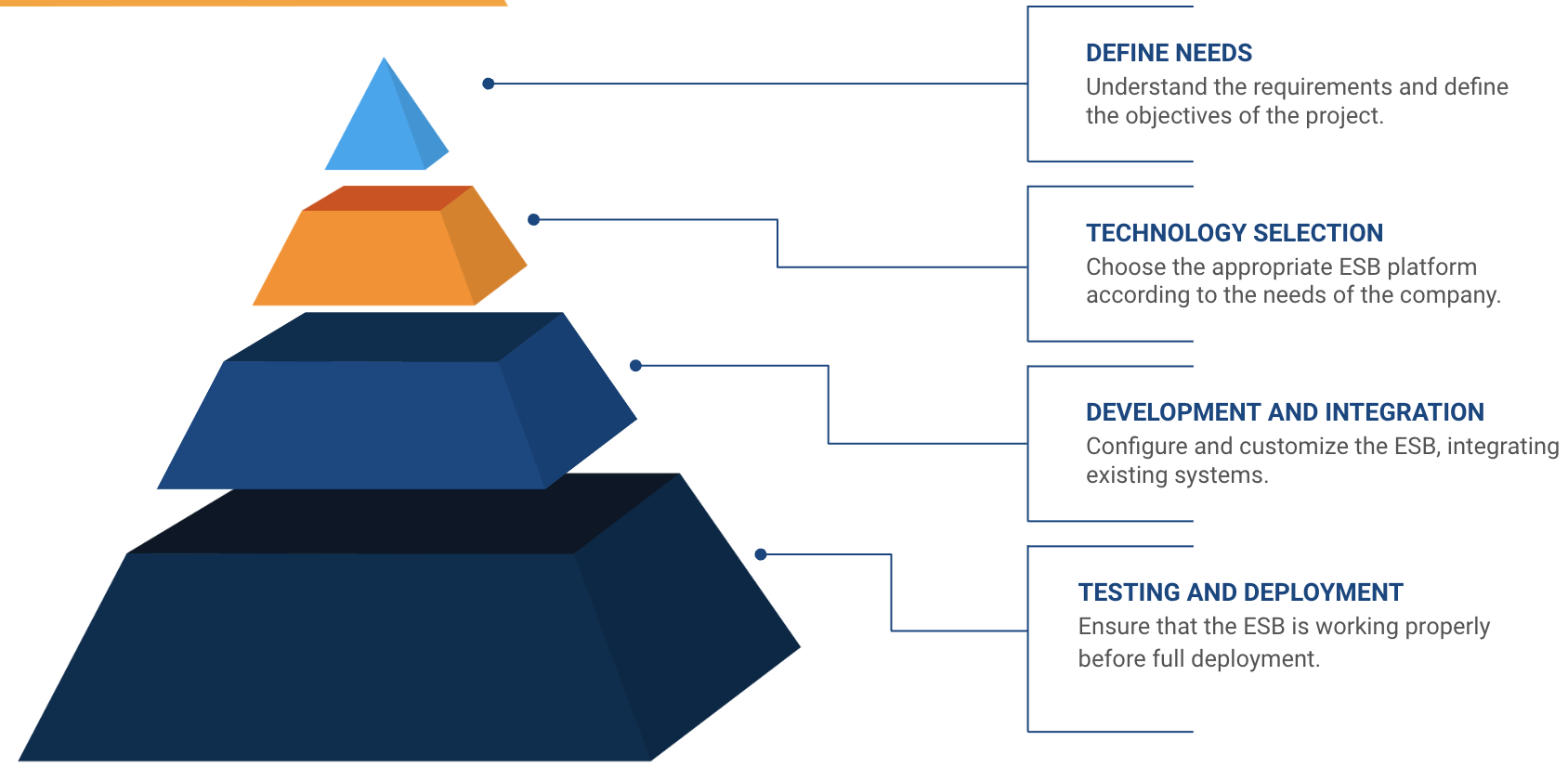
The Enterprise Service Bus (ESB) is a software architecture designed to facilitate the integration of services and applications within an enterprise. Through an ESB, companies can improve communication between their systems, optimizing their operations and improving efficiency. This article will explore the importance of ESB, its advantages and use cases in various sectors, providing practical examples of its implementation.

Importance of ESB in systems integration
Systems integration is crucial for any company that handles multiple applications and services. The ability of these systems to communicate effectively can determine the operational success of the company. This is where the ESB comes in, providing a framework for communication between services that can handle different protocols, data formats and system architectures.
The ESB acts as an intermediary, transforming and routing messages between disparate systems. This reduces the complexity of point-to-point integrations, making it easier to manage and maintain the company's technological infrastructure. Additionally, an ESB can improve system scalability and flexibility, allowing companies to quickly adapt their operations to market demands.
Advantages of using an ESB in enterprise architecture
Implementing an ESB in the enterprise architecture offers multiple advantages:
| Advantage | Description |
| Complexity reduction | An ESB simplifies the integration of multiple systems, eliminating the need for point-to-point connections. |
| Improved scalability | Makes it easy to add new services and applications without disrupting existing systems. |
| Flexibility | It allows companies to adapt to technological and business changes more quickly. |
| Security | An ESB can incorporate advanced security measures to protect communication between services. |
| Centralized management | Provides a central point for monitoring and managing integrations. |
ESB use cases in the financial sector
In the financial sector, efficient ESB systems integration is vital for fast and secure transaction processing, data management and regulatory compliance. Some use cases include:
Payment processing: An ESB system can integrate different payment systems, facilitating the processing of transactions in real time.
Customer management: Allows the integration of CRM systems with banking applications, providing a unified view of the customer.
Regulatory Compliance: Assists in consolidating data from different systems to comply with financial reporting regulations.
A practical example is the use of an ESB by banks to integrate their risk management systems, allowing real-time analysis of financial risks and improving decision making.

ESB use cases in the health sector
The healthcare sector benefits greatly from the ESB's ability to integrate clinical, administrative and patient management systems. Some use cases are:
Electronic health record (EHR): An ESB facilitates the integration of different EHR systems, allowing healthcare professionals to access complete and up-to-date patient information.
Hospital Information Systems (HIS): Integrates HIS systems with laboratory, pharmacy and radiology applications, improving operational efficiency.
Telemedicine: Allows the integration of telemedicine platforms with existing health systems, improving patient care.
For example, hospitals that implement an ESB can achieve more fluid communication between departments, reducing medical errors and improving the coordination of patient care.

ESB use cases in the retail sector
The retail sector requires effective integration of its inventory management, sales and customer service systems. ESB use cases in this sector include:
Inventory Management: Integrates inventory management systems with online sales platforms, ensuring real-time updating of product availability.
Customer service: Facilitates the integration of CRM systems with customer service platforms, improving the customer experience.
Sales analysis: Allows the consolidation of sales data from different channels, providing a comprehensive view of business performance.
A practical example is the use of an ESB by retail chains to integrate their point of sale (POS) systems with their ERP, improving inventory management and customer satisfaction.

Common benefits of ESB in various sectors
Regardless of the sector, common benefits of implementing an ESB include:
- Greater operational efficiency
- Improved decision making
- Costs reduction
- Increased business agility
How long does it take to implement an ESB in a company?
The implementation time for an ESB can vary depending on the complexity of the existing infrastructure and the specific requirements of the company. Typically, an ESB implementation project can take anywhere from a few months to more than a year. Factors that influence implementation time include:

The Enterprise Service Bus is a powerful solution for systems integration in any sector, offering greater efficiency, scalability and flexibility. Companies in sectors such as finance, health and retail can greatly benefit from its implementation, improving their operations and ability to respond to market demands.


